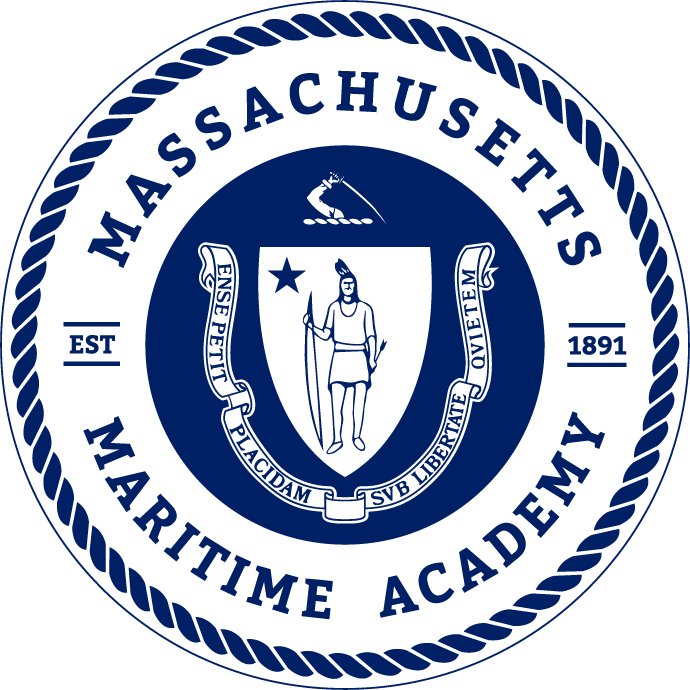Course Description
The intent of the course Integrated Navigation I is to seamlessly combine the instruction and certification of Marine Radar detection systems, Automated Radar Plotting Aids (ARPA) and Automated Information Systems (AIS). With the advancements in technology, modern ships make use of an integrated navigation system into which multiple sensors and positioning equipment feed. To meet the needs of the industry now trains cadets using the Wartsila Navi-Sailor 5000 DNV certified Integrated Navigation simulation platform.
This course consists of a two hours and fifty minutes class once per week for a combination of theory and simulation, using the Wartsilia Integrated Navigation Simulator.
Entrance requirements
The prerequisites for this course are Navigational Rules of the Road (MT-2161), Deep Sea Navigation (MT-2121), Algebra and Trigonometry (SM-1111); additionally, cadets must comprehend, read and write English (HU-1111).
STCW Objectives
Demonstrate knowledge and understanding of the following STCW elements:
- OICNW-A2.5 Knowledge of blind pilotage techniques
- OICNW-A3.1 Knowledge of the fundamentals of radar and automatic radar plotting aids (ARPA)
- OICNW-A3.2 Ability to operate and to interpret and analyse information obtained from radar
- OICNW-A3.2 application of the International Regulations for Preventing Collisions at Sea, 1972, as amended
- OICNW-A3.2 detection of misrepresentation of information, false echoes, sea return, etc., racons and SARTs
- OICNW-A3.2 factors affecting performance and accuracy
- OICNW-A3.2 identification of critical echoes; detecting course and speed changes of other ships; effect of changes in own ship’s course or speed or both
- OICNW-A3.2 parallel indexing
- OICNW-A3.2 plotting techniques and relative- and true- motion concepts
- OICNW-A3.2 range and bearing; course and speed of other ships; time and distance of closest approach of crossing, meeting overtaking ships
- OICNW-A3.2 setting up and maintaining displays
- OICNW-A3.3 Principal types of ARPA, their display characteristics, performance standards and the dangers of over-reliance on ARPA
- OICNW-A3.4 deriving and analysing information, critical echoes, exclusion areas and trial manoeuvres
- OICNW-A3.4 methods of target acquisition and their limitations
- OICNW-A3.4 system performance and accuracy, tracking capabilities and limitations, and processing delays
- OICNW-A3.4 true and relative vectors, graphic representation of target information and danger areas
- OICNW-A3.4 use of operational warnings and system tests
Demonstrate proficiency in the following skills:
- OICNW-1-2A Fix by two bearings
- OICNW-1-2B Fix by two ranges
- OICNW-1-2C Fix by tangent bearings of two identified objects
- OICNW-2-1D Determine risk of collision
- OICNW-2-1E Maneuver to avoid risk of collision – meeting
- OICNW-2-1F Maneuver to avoid risk of collision – overtaking
- OICNW-2-2E Navigate in restricted visibility (blind piloting)
- OICNW-2D1E Maneuver to avoid risk of collision - crossing
- OICNW-3-1A Set up and maintain radar display
- OICNW-3-1B Switch display modes
- OICNW-3-1C Identify false echoes, sea return, racons and SARTs
- OICNW-3-2A Set up and maintain an ARPA display
Learning Objectives
Upon completing the INTEGRATED NAVIGATION I course, students will gain the necessary skills to operate the Radar and ARPA competently. In addition, students earn a certificate upon successfully graduating from the Marine Transportation program.
Successful Students shall demonstrate a proficient understanding of the following areas:
- Equipment limitation
- Maintaining an appropriate display
- Contact collision avoidance evaluation
- Application to COLREGS
- Utilizing equipment for effective withstanding
- Selecting plotting graphics controls suitable to the circumstances
- Making appropriate use of operational alarms
- Acquiring and tracking targets that present a potential threat of collision
- Extracting the information needed on course, speed, and closest point of approach
- Being able to take early action and prevent a close-quarters situation
- Limiting the over-reliance on equipment
- Principles of Radar Navigation
- Plotting target’s echo to determine target information and collision avoidance
- Discern potential errors of interpretation
- Selecting operation settings and alarms for route monitoring
- Navigational calculations and position fixing
- Selecting safety parameters
- ARPA and AIS functions
- Utilizing equipment to determine tides and currents information
